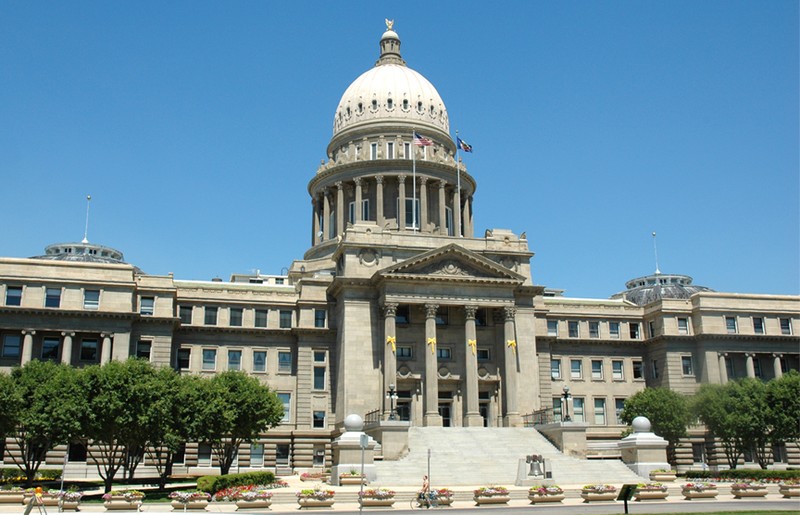Idaho State Capitol
Introduction
Text-to-speech Audio
The Idaho State Capitol is a great example of Renaissance Revival architecture. It was built in two stages, in 1912 and 1920. From the first floor to the eagle atop the dome, the building rises 208 feet and the floor area of the building when completed was 201,720 square feet. There is over 50,000 square feet of artistically carved marble in the building. The eagle atop the dome stands at 5 feet 7 inches tall and is made of copper with bronze plating. In 1905, the Idaho legislature passed the bill authorizing the building's construction. The first stage took several years to complete but the second stage, during which the wings (House/Senate chambers) were constructed, took only one year. The original cost to construct the Capitol was $2.1 million. Replacement costs today would be over $100 million, with many materials considered irreplaceable.
Images
The Idaho Capitol Building was constructed in two stages; the central part in 1912 and the two wings in 1920. It is an excellent example of Renaissance Revival architecture.

Backstory and Context
Text-to-speech Audio
For almost two decades, Idaho's territorial government was housed in various private buildings around downtown Boise. After failed efforts to get the federal government to fund a capitol building, the territorial legislature finally agreed in 1885 to appropriate $80,000 for its construction.
The red-brick structure, located on the block between Jefferson and State and Sixth and Seventh streets, served not only the last four years of territorial government (1886-1890) but the first twenty-two years of statehood. In 1905, as the state's population mushroomed with the advent of federally funded irrigation projects, a Capitol Building Commission was authorized. In addition to receiving detailed instructions from the Legislature on where and how to build the new Capitol building, the commission was expected also to build a new, separate structure to provide heat and electricity. Nothing was said about indoor plumbing, though the territorial capitol building was served by an outhouse.
All was to be paid for from the sale of public lands designated for this purpose in the statehood admission act, plus the $66,003.35 then in the Public Building Endowment Fund, for a total of $350,000. Despite the provisions of the 1905 law, the final cost was $2,098,455.05 for the structure and $130,833.10 for interior furnishings.
The red-brick structure, located on the block between Jefferson and State and Sixth and Seventh streets, served not only the last four years of territorial government (1886-1890) but the first twenty-two years of statehood. In 1905, as the state's population mushroomed with the advent of federally funded irrigation projects, a Capitol Building Commission was authorized. In addition to receiving detailed instructions from the Legislature on where and how to build the new Capitol building, the commission was expected also to build a new, separate structure to provide heat and electricity. Nothing was said about indoor plumbing, though the territorial capitol building was served by an outhouse.
All was to be paid for from the sale of public lands designated for this purpose in the statehood admission act, plus the $66,003.35 then in the Public Building Endowment Fund, for a total of $350,000. Despite the provisions of the 1905 law, the final cost was $2,098,455.05 for the structure and $130,833.10 for interior furnishings.
Sources
"History of the Idaho Capitol Building." Idaho Capital Commission, Department of Administration. Accessed May 18, 2014. https://capitolcommission.idaho.gov/about/history.html.
